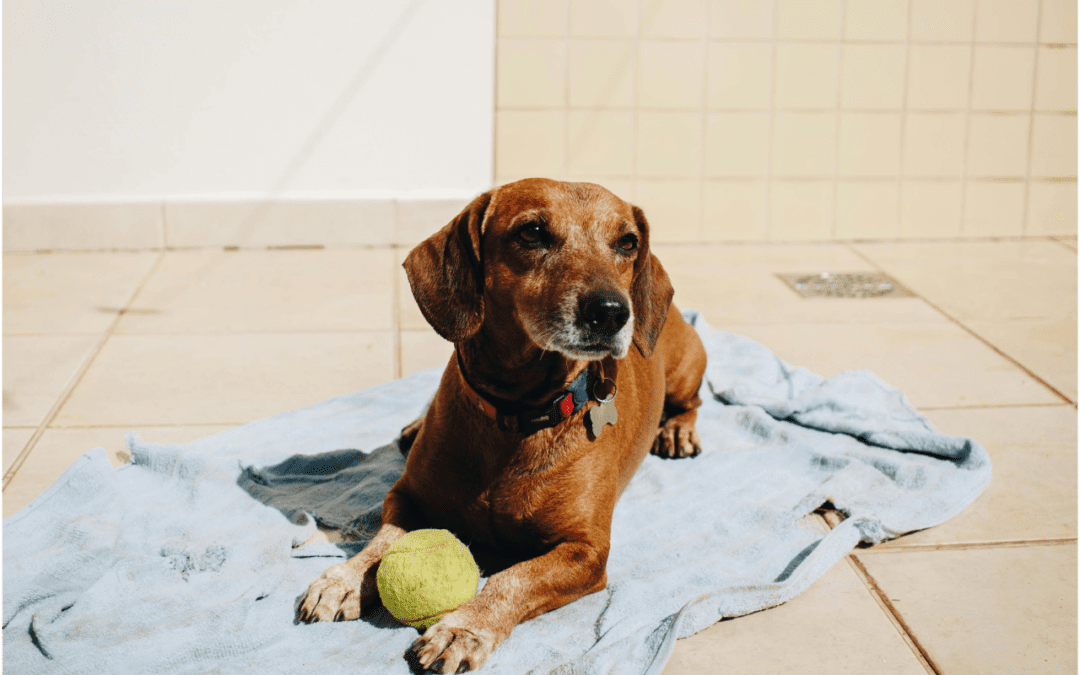Going to outdoor dog events, camping out, hiking, planning picnics, or simply lounging poolside? Being out in the sun without protection means that sunburn is a possibility.
White, light-colored, or sparse-coated dogs are especially at risk. While dark-skinned, densely-coated dogs may require no intervention at all, those with light coats, summertime haircuts, and bare noses need attention.
Sunscreens for dogs are strongly recommended. Spray these on your hands and rub into any exposed skin (ears, belly, nose, back, top of head, etc.). In a pinch you can use baby sunscreen but avoid those with zinc or PABA. Both can be toxic to dogs. Always elect a product with SPF 50 or greater and reapply hourly, especially when swimming. UV-protecting t-shirts and vests are now commonly available too.
Bad sunburns may need more than just some aloe (though it helps). See your veterinarian, particularly if the sunburn affects more than just one spot. Pain relievers and more effective topical treatments may be in order.
Skin Cancer
Though all pets are theoretically at risk for skin cancer, those who receive higher doses, either by virtue of their lifestyle (outdoor living, chronic sunbathing) or geographic location (think Sunbelt or high-altitude areas), are far more so. It only makes sense then that a pet with little of the protective pigmentation we associate with a lower risk of skin cancer should prove especially worrisome.
In fact, white cats who live outdoors can suffer a scary kind of cancer called squamous cell carcinoma (among others) that affects the tips of their ears and noses –– right where most dogs get their burns. They tend to appear as ulcerated sores in these areas and must be addressed immediately if we’re to have any chance of stopping their spread and saving their lives.
Pad Issues
The good news is that the pads of the feet, in particular, do not seem as highly predisposed to malignant tumors. The ouch-factor, however, can be a big deal, even more so than for sunburn.
Pad burns (which happen commonly to dogs walked on hot asphalt or sand) can get debilitatingly painful and may require serious intervention should dogs develop blistering burns. (The pads may look white before they blister.)
Note: Any pad burns need veterinary attention! These are a big deal! And remember, not all dogs will limp. Some may simply walk almost imperceptibly slower or more gingerly.
Heat Stroke or Heat Exhaustion
Heat exhaustion is what happens on the way to heat stroke. Dogs will pant heavily, their tongues will loll out of their mouths, their gums will be bright pink, and they’ll usually slow down (but some won’t!) and possibly collapse. Dogs who are not cooled down at this point will progress to heat stroke, a primarily vascular event that leads to a shut-down of all normal circulatory processes and very often death.
Owners need to recognize that some dogs are particularly predisposed to heat exhaustion and heat stroke. Everyone knows that English Bulldogs, for example, are not capable of cooling themselves properly due to their respiratory anatomy. But did you know that overweight dogs of any breed may suffer just as much or more?
One study recently found that obese dogs were more likely to suffer heat issues than Bulldogs and other smush-nosed breeds. Please take that to heart and be especially careful with your heavy dogs.
All dogs who suffer heat-related collapse must be cooled down with water or in a cold car on their way to a veterinarian. All should see a vet ASAP. This is crucial!
To prevent heat safety hazards all you have to do is stay out of extreme heat and avoid prolonged exercise in warm-weather conditions. Cooling vests, cooling beds, drinking water access, and a nearby source of cooling (a hose, a pool, a lake, the ocean, air conditioning, shade) are all helpful… but nothing beats vigilance!
While you can’t predict when your pet is going to get sick or injured, you can protect yourself from expensive veterinary bills. Embrace Pet Insurance gives you the freedom to do what’s best for your pet without stressing over the cost. Easily personalize your coverage to fit your budget and your pet’s needs, then visit any vet for nose-to-tail coverage. Check out what the Embrace plan covers or compare pet insurance providers to learn more.
https://www.embracepetinsurance.com/waterbowl/article/sun-protection

